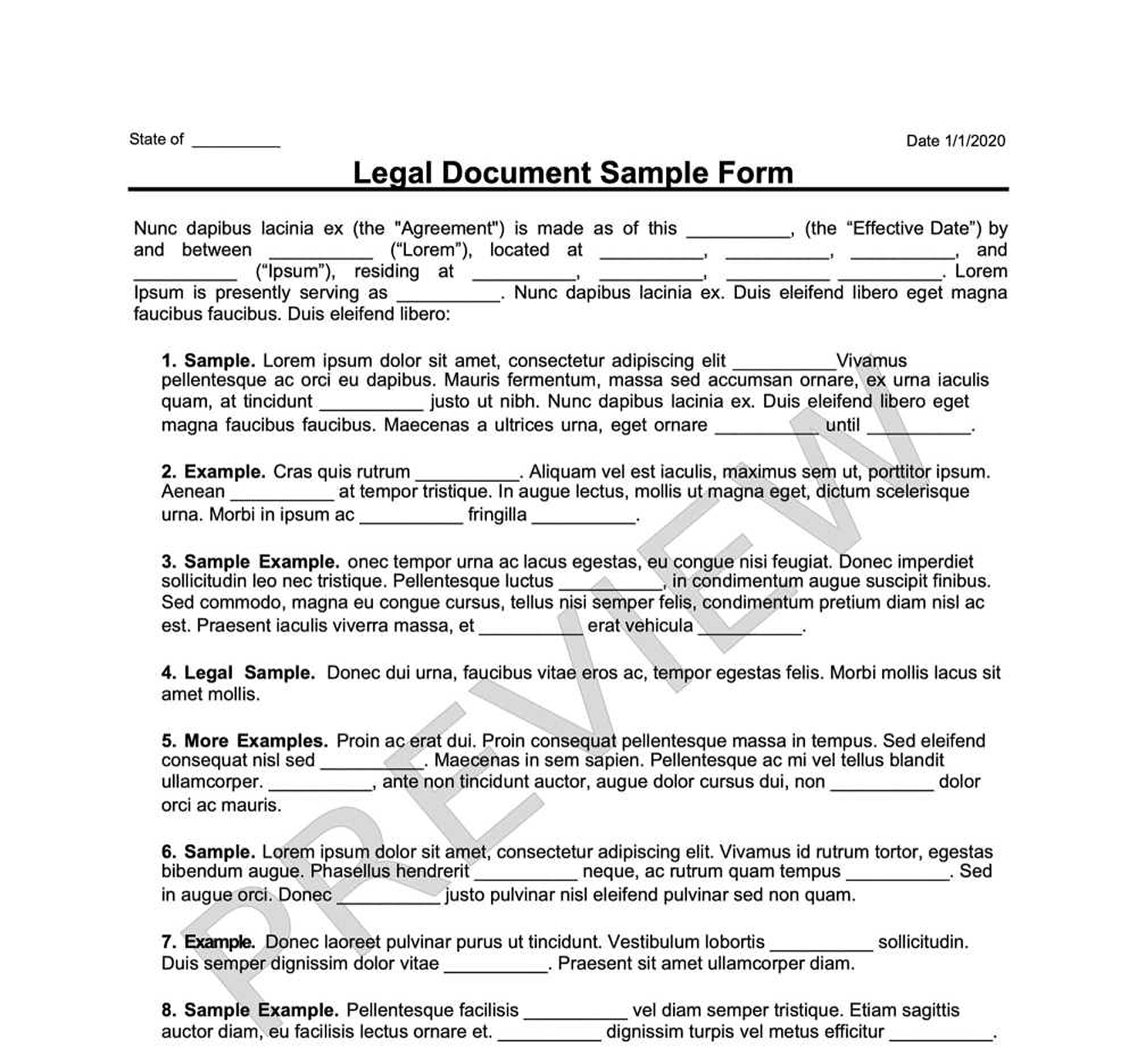Special Needs Trust
The Special Needs Trust allows a disabled person to receive income and gifts without jeopardizing their eligibility for government benefits.

How it Works
Build your selected document.
Answer a few simple questions with step-by-step instructions.
Print & download forms instantly. Sign & make it legal.
What Is a Special Needs Trust?
Families caring for a disabled person can benefit greatly from establishing a Special Needs Trust. It is a highly efficient way for a disabled individual to receive money and gifts directly without forfeiting government assistance qualification.
There are specific guidelines for setting up a Special Needs Trust to navigate the rules of programs such as Medicaid and SSI (Supplemental Security Income.)
What Is a Special Needs Trust?
SSI programs and Medicaid have an asset limit of $2,000. If a beneficiary of these programs suddenly comes into more valuable assets, they can become ineligible.
Toward this end, the Special Needs Trust can be used to hold such assets instead. The grantor can appoint oneself as the trustee or a trusted someone.
It is important to remember that the trustee cannot give the money directly to the disabled beneficiary, or it would constitute a direct interference with the SSI and Medicaid programs' rules. The trustee can only buy goods and pay for services.
For example, the Special Needs Trust can be used to pay for care attendants, dental expenses, education, rehabilitation, home furnishing, and more.
Other Names for Special Needs Trust
Depending on your state, a Special Needs Trust may also be known as:
-
Supplemental Needs Trust
-
Special Needs Trust form
-
SNT
-
Self-Settled Special Needs Trust
-
Third-Party Special Needs Trust
Who Needs a Special Needs Trust
The Special Needs Trust helps people afflicted with a debilitating injury or a chronic disability. For example, if you are injured and waiting for a settlement, a Special Needs Trust could be right for you.
Another common purpose is a parent or family member setting one up for a disabled child or adult. The beneficiary can then receive gifts and payments through the trust without the risk of disqualification from government programs.
Why Use Swyft Forms for Your Special Needs Trust?
Customized for you, by you
Create your own documents by answering our easy-to-understand questionnaires to get exactly what you need from your Special Needs Trust.
Specific to Your Jurisdiction
Laws vary by location. Each document on Swyft Forms is customized for your state.
How to Create a Special Needs Trust with Swyft Forms
The Special Needs Trust can do so much for someone in your life with a disability. With just a few details, you can count on Swyft Forms to make this process easier for you.
Let Swyft Forms help with our extensive library of attorney-vetted legal forms. The process is fast and easy. All you have to do is fill out our easy-to-understand questionnaire. Once complete, simply download your form as a PDF or Word document from your secure online account.
What Information Will I Need to Create My Special Needs Trust?
To create your document, please provide:
-
Trustor's information: The legal name and other details of the person establishing the trust.
-
Trustee information: The legal name and further details of the person who is managing the trust.
-
Beneficiary information: The legal name and other details of the beneficiary of the trust (person with a disability.)
-
Purpose of the trust: Explains the particular needs of the beneficiary as they pertain to the trust.
-
Funding of the trust: The assets placed into the trust.
-
Trustor's lifetime powers: Details of how the trustor can add more assets to the trust.
-
Trustee's administrative powers: Describes in detail the specific capabilities and limitations of the trustee.
-
Insurance policies and retirement plans: All insurance policies and retirement plans for the beneficiary.
-
Methods of distribution: Specify how the funds will be distributed.
Special Needs Trust Terms
-
Grantor/Trustor: The person establishing the trust
-
Trustee: The person managing the trust
-
Beneficiary: The disabled person receiving benefits from the Special Needs Trust
-
Fiduciary duty: The legal duty of one party to act in the best interests of another
-
SSI: A Social Security Administration program paying monthly benefits
Special Needs Trust Signing Requirements
Your Special Needs Trust documents must be signed and witnessed in the presence of a notary public. Both the trustor and the trustee sign the form. If necessary, you may want to consult an appropriate attorney before signing the document to ensure everything is in order.
What to Do with Your Special Needs Trust
With the Special Needs Trust document signed and notarized, the next thing to do is fund it. First, you must obtain a tax identification number for the trust from the IRS. After that, you can open a bank account with a small deposit. From there, the Special Needs Trust can be funded in other ways, including a will, a Living Trust, and other tools.
Other Names for Special Needs Trust
- Special Needs Trust Form
- Special Needs Trust Document
- Special Needs Trust Agreement
- Special Needs Trust Contract
- Special Needs Trust Template
- Special Needs Trust Checklist
Who Needs a Special Needs Trust?
Why Use Swyft Forms for Your Special Needs Trust
Customized for you, by you
Specific to Your Jurisdiction
Why choose Swyft Forms?
Create professional documents for thousands of purposes.
Make unlimited documents and revisions.
Our documents are vetted by lawyers and are applicable to all 50 states.
